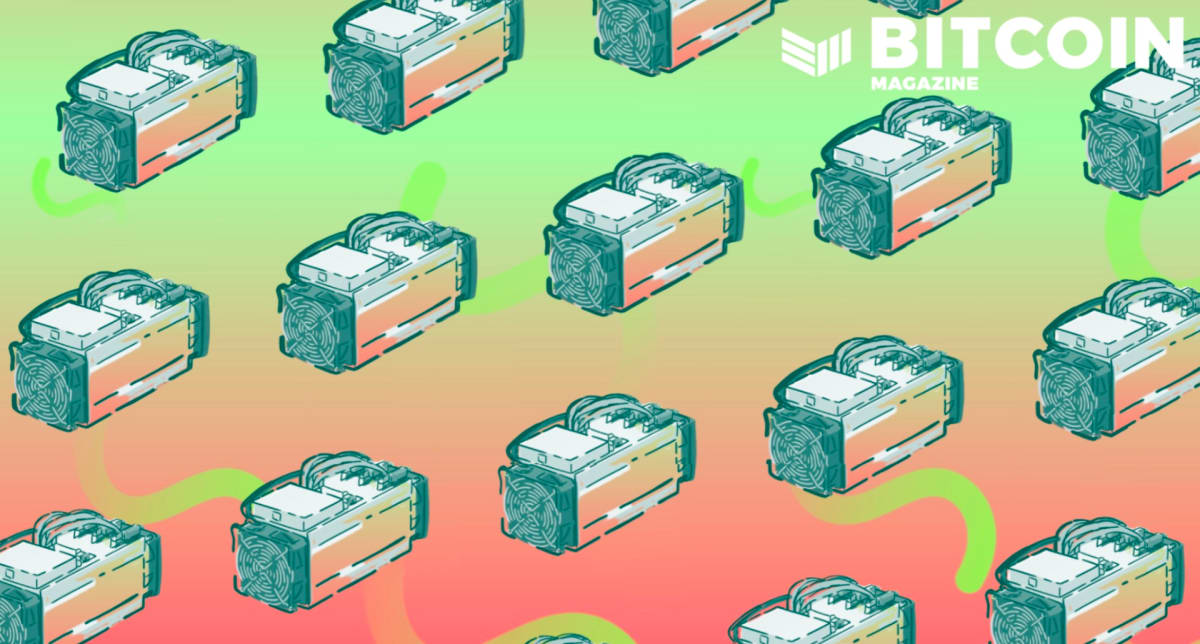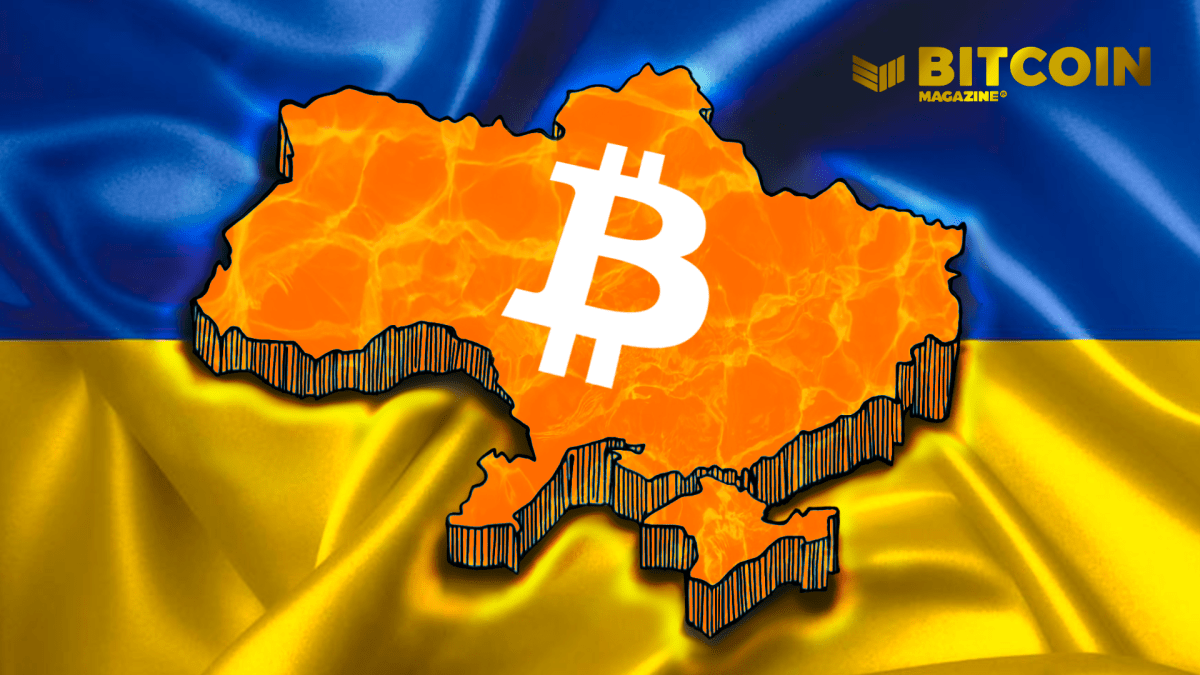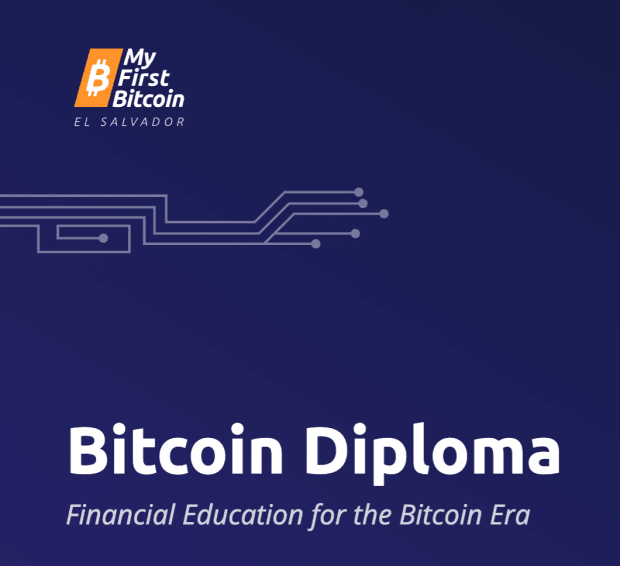On 50th Fiat Anniversary, Bitcoin Can Solve U.S. Gratification Addictions
On the 50th anniversary of the fiat dollar, the U.S. is addicted to instant gratification in money printing, processed foods and more.
My fellow plebeians of Bitcoin, El Salvadorians, Nigerians and Americans… I bring you here today for a very special reason. It is the 50th anniversary of a moment that has proven so pivotal and insidious, that every single corner of America’s economic market is feeling lasting ripple effects that have swelled into their own tsunamis
Fifty years ago today, a secret meeting at Camp David, comprised of U.S. President Richard Nixon and senior ranking White House and Treasury advisors, decided to call an end to the Bretton Woods Agreement. Convertibility to the dollar was suspended, and the fiat U.S. dollar was conceived. No longer were Americans able to convert their dollars for gold (with exceptions). This also meant that country-to-country trade could no longer be priced in gold, which the U.S. was running out of after World War II (and rapidly).
Fast forward 50 years to today. America is going through a handful of midlife crises, all at once. We’re unhealthy, suffocating under a metric fuckton of debt, outstanding medical obligations are piling up and all this while everyone’s beginning to realize that our Monopoly Money isn’t actually worth much. But I am of the belief that the Monopoly Money issue goes much, much deeper than everyone else is aware of. I intend to release a series of articles that go through a few industries that seem to be flying under the radar, as well as a few that are getting attention. First, I would like to direct your attention toward food.
The Food Industry
The food industry has been the source of some very interesting, multi-faceted dynamics over the past decade or two, (at least to me), that I would like to discuss.
On one side, we have the Standard American Diet (SAD), and on the other side we have what health science is telling us about the biological effects of the SAD diet. And then, there’s all sorts of fad diets (scams), nutritional diets (based on the individual and science) and then there’s the intellectually dishonest marketing campaigns. As if the waters weren’t muddy enough, right? Then there’s the nature of lobbying in Washington D.C., and its plausible effects on the scientific community. And then we’ll look at farming and agriculture (albeit briefly). Simply put: the food topic is an absolute shit show.
But for conversation’s sake, I’m interested in starting with the first two issues (the SAD diet and its health ramifications), and then wrapping up with the last three (science, marketing and lobbying, not specifically in that particular order).
The Standard American Diet
What makes up the Standard American Diet is basically what the average citizen chooses to eat on a consistent basis, and the quantities of such. The problem? Do you think people pick what they eat based on what they need, or do people tend to pick what they want, or crave? That question is obviously rhetorical. The issue here being that if the average individual is making diet decisions, day by day, based on what they want… well… I’m sure we can all identify the dichotomy — the things we want conflicting with what we may actually need. It is by this discussion that we run into a very, very interesting relationship that plays directly into this struggle of daily food choices.
There is a doctor, Dr. Robert Lustig, who puts forth an eloquent model of this very battle. The average individual, I’m sure we can agree, is driven very much by the immediate reward system of the body — which is dopamine. Dr. Lustig’s work provides some terrifying insight, which I will lean on briefly.
How many of us are waking up every day plagued with the dull reality of drudging through a job we hate, for which we are underpaid, while under a mountain of debt that we have no legitimate hopes of climbing out from? I would imagine this being quite a common reality. Having to offset the activities and fun of preference, for a form of income to support our daily necessities; housing, food, hygiene, water, etc. When you’re denied something… how bad do you want it? We are constantly driven to seek reward, and the dopaminergic (which is a fancy word for “referring to the systems that interact with dopamine”) pathways are referred to as “the reward system” of the body. So, as we are deprived of dopamine, we are driven to seek it out whenever, and wherever, possible.
How do we get our dopamine fix? Dopamine release can be activated during drug use, such as with stimulants like caffeine and cocaine, or through activities such as playing video games, watching movies, listening to music or winning a game of soccer with some friends. The more excitement, the more reward, and importantly, the more expectation of a reward, the stronger the dopamine high that we achieve. We can also stimulate the reward system through something as basic as food — that chocolate bar when you stop for gas, or the ice cream when you’re feeling down or that heavy pasta meal after landing a big milestone.
Dopamine And High Time Preference
The issue after all of this? Dopamine is addictive. Highly addictive. It’s why caffeine, sugar and cocaine are so addictive — the dopamine that gets stimulated by the consumption of these products. The scariest part? Dopamine overstimulation can essentially lead to a frying of the neuronal pathways within the brain. Dr. Lustig details this process, as well as many of the others in a fantastic podcast that I have linked here.
Now, you may be asking, “Okay, cool Mike, we’re talking about money and bitcoin, why are we going on this ‘Magic School Bus’ ride through some science-y, health talk?” Reasons. Which I will explain now.
If the vast majority of our citizenry is being heavily driven by these dopaminergic reward systems like seeking out more exciting video games, and higher carbohydrate-dense meals, there are a few things happening all at once. Firstly, it’s bad for your health. Not only are the sugar highs causing our population to develop a slew of chronic diseases and metabolic conditions, but the dopamine addiction is, likely, causing individuals to choose activities that give them that excitary high at the most efficient energy expenditure possible. Which means…? Movies (Netflix), cell phone use (yes, this also includes social media use, including Tinder) and video games. I base that very simple assumption off of typical drug-seeking behavior. So, not only are our neighbors seeking their latest dopamine hit within their food choices, but they’re likely seeking it out in their freetime use and lifestyle choices.
This goes a bit deeper, still. What’s an issue that addicts encounter as they use? Tolerance goes up, leading to a need for greater and greater levels of stimulation to achieve the desired effect. But it’s not just in the quantities that this dynamic is affected, it is also in the time duration that it takes to receive the high. Our addicts want the high they are seeking faster, and in greater potency. Which is also rewiring the brain, seeking out instant-gratification as much as possible, and as fast as possible. Ultimately resulting in a functional change in how the brain processes information, such as decision making and critical thinking.
This dopamine addiction within the population is affecting physical health by way of the exact diseases listed previously: obesity, type 2 diabetes and depression (as dopamine down-regulates serotonin). This addiction is also causing the functioning of the brain to shift toward that of a drug addict — seeking out more and more sugar to activate our reward system in greater and greater amounts.
What ties all of this back to my point? Money.
And that is ultimately why I bring you here. The health complications (caused by heavy food processing and high-time preference lifestyle choices) are placing a heavy demand upon the healthcare system. They are also weighing down the insurance industry (which I will detail in a separate piece). At the same time we have industries like big pharma that are profiteering from the deteriorating health of the public. Simultaneously, still, we have the food manufacturers that are sweeping massive swaths of cash by shoveling these addictive, manufactured “foods” to Average Jane, Joe and their children. Not only are processed foods highly addictive, but they’re also much cheaper to produce and sell — both in monetary cost, as well as time value. Why grow natural food when you can produce a processed imitation that has (relatively) the same ingredients, and looks the same on paper? (That answer would be, among many other things, bioavailability. But that’s a discussion for another time).
The world revolves around money.
So, we have the average American that is being absolutely bombarded by dopamine stimulation on a consistent basis, day in and day out. The movies we watch, the video games we play with friends, the music we consume and the food we gorge upon… even smartphone usage or gambling — which became a very interesting topic regarding r/WallStreetBets and the dogecoin market — are all kicking off dopaminergic responses. And we’ve detailed how the release of dopamine pushes us into seeking out these rewards continually. But these activities and products are also motivating our daily food choices. How much money do you think you spend on these kinds of products and services?
I mean, I LOVE sitting down to a good action flick with a gallon of ice cream (who doesn’t?).
Money doesn’t just buy you food and bitcoin. Money also buys you time.
For example, buying the time and attention of a politician.
Science, Institutions And Corporate Lobbying
On the other side, we have scientific institutions. While these institutions were founded under well-intended means, they are also led and operated by… humans. This means that they are not perfect, that motivations and interests may sway, as well as the most common aspect of humanity prevailing: the tendency to be wrong.
This is where we step into a proverbial pile of shit in my oh so humble opinion. Between Steven Brill’s fantastic work on “Tailspin” and this 2015 article published by The Atlantic, we can start to see why things go awry. It is absolutely astounding how so many issues today trace their lineage back to Nixon’s presidency. We go back to the 1970s (again, I know): the First Amendment right to petition the government was leveraged by companies to press members of Congress, including their staff (which includes those at regulatory agencies and executive branches).
This seemingly basic decision has ballooned into a cancer all its own. The Atlantic article titled “How Corporate Lobbyists Conquered American Democracy” detailed that, at the time of writing (2015), corporations were spending $2.6 billion per year on lobbying alone. For 2019, this figure had risen to $3.51 billion.
The reason that this is an issue? Corporations (and/or wealthy and powerful individuals, groups and organizations) can (in theory) leverage their assets and powers to influence not only people, but data and scientific studies. Especially if this entity can gain political favor with an influential figure, these groups can even go so far as to (again, in theory) gain federal funding to conduct a study that suggests their product serves an economic (or environmental/sociological) good! That’s the funny thing with statistics, you can essentially manipulate them in any way necessary to achieve the desired outcome. For a personal and very eye-opening account of this very process, I recommend no other book than “The New Confessions of An Economic Hitman.” John Perkins is a champion for risking life and liberty to discuss the systems and processes by which this very practice of statistical manipulation occurs.
If we can’t trust institutions that were established on the promise of following data and truth, and not the narrative… we can no longer trust what they have to say about any subject. Dr. James Todaro broke down this problem with an issue that afflicted nearly every single soul on the planet. The Lancet got caught up in a particular bind in 2020 when it published a study on May 22, 2020, that was rapidly utilized as a credible source to cease clinical trials for a treatment of the coronavirus pandemic, spreading like wildfire as mainstream media outlets caught wind of it. The study claimed that a particular treatment was ineffective, and possibly even dangerous. In the time since then, the study has been retracted by The Lancet. However, this does not ameliorate the fact that this is a symptom of a much greater problem.
We have entities that make a business of providing products to our citizens, neighbors and families, that are being used to nourish ourselves, grow and stay healthy. And these entities are seeking greater and greater profits without regard to their products’ quality or health impacts. We have a very serious problem on our hands if these entities are turning and acting upon two strategies: One, manufacturing processed foods of greater and greater addictive properties, and two, influencing (some might go so far as to say “manipulating”) public officials to garner federal funding to provide doctored statistics from studies through previously trusted institutions within the academic community.
To make matters worse, we haven’t even discussed the nature of the agriculture industry, which is plagued by mafia-style business tactics (both literally and figuratively), all the way down to the fertilizer. Plus, I am of the personal belief that over-reliance of herbicides and insecticides on crops is to blame for the massive rise in food allergy prevalence among the youth populations.
To spark any possibility of interest within this topic, I would like to direct attention to this 2008 brief from the Centers for Disease Control (CDC). In the period of 1997 to 2007 food allergies among children increased 18%. In ten years, the prevalence of food allergies increased 18%, that is absolutely insane. What’s worse, is that hospitalizations between 2004 to 2006 that were responsible for and/or related to food allergies were up over 130% from 2001 to 2003. What could be the cause of all this? I won’t dare answer that specifically, as my opinion would likely be ignorant to many factors that I have missed in this article alone.
However, when you start to lay out the landscape as we have done, things start to become less and less surprising. And in my opinion, very much linked.
How Bitcoin Fits In
BUT FIRST. Let’s start a recap, we have
- The American population is eating a standard quality of diet that innervates a slew of dopaminergic rails.
- These dopamine-inducing foods enable the reward system and, due to their high simple sugar contents (carbohydrates, specifically refined sugars), this is to the comparable extent of developing an addiction.
- At the very same time, we have societal and lifestyle conditions that are exacerbating this addictive system: excitatory, digital (blue light) experiences such as movies, video games, social media and smartphone use. These all stimulate dopamine release, compounding upon the addictive development.
- This addiction leads to multiple chronic, metabolic health conditions that are very costly to treat.
Where does this all play out for importance to Bitcoin? The money printer.
Once companies gained the ability to aggressively lobby politicians, which started in the 1970s (the same time period as the cessation of the gold standard, oh so coincidentally), every industry gained access to the infinite money printer. Since then, the ability to manipulate public opinion of foods and products via advertising and manipulation of scientific studies in order to boost revenue has been a constant elephant in the room.
Today, this is finally coming to a head in the form of rapidly-deteriorating public health. And this quickly collapsing public health scenario is bogging-down our healthcare system. When I was in my first year of university, I was working as a student providing inventory to operating rooms (ORs) where we had access to information on the type of procedure that each room was preparing for. I can tell you, with absolute confidence in my memory, that 75% to 85% of the procedures going through the OR were related to metabolic disease/conditions. And that was back around 2012.
The whole point I am making is not that Bitcoin would have prevented this, (at least not entirely). The problem is that bad money, in this case the U.S. dollar, has been “ripe for the printing” ever since the gold standard was removed. By allowing companies to lobby their cases to politicians, it opened the floodgates to the gambit of manipulations that money and power can provide. You may be wondering how. Well, we’ve now all seen the kinds of sneaky shit the politicians can pull by adding clauses and amendments to bills (i.e., the recently-proposed infrastructure bill). I mean, the article that The Atlantic published showing how sugar was marketed as a diet aid should be all that you need to see.
With a sound, honest money like bitcoin, we at least have the likelihood that it wouldn’t have been nearly as easy for this outcome to occur, solely because the money to provide the funding for the marketing campaigns, lobbying and studies wouldn’t have been able to be willed into existence. And this is, of course, able to occur because of the existence of the Federal Reserve, the all-time monetary backstop of the United States of America, available to you as long as you have the proper consortium of buddies that can get you as close to the chairman as possible.
So, I’ve discussed how America is addicted to sugar and flashy, exciting light shows and instant gratification. You think it’s coincidental that we are also addicted to printing money, and kicking the proverbial can down the road?
All I’m saying is, Bitcoin would have made it harder for this to happen. That’s all.
(Coming Soon: I look into the insurance industry. It is a very important part of the conversation around healthcare, the economy and the money printer.)
This is a guest post by Mike Hobart. Opinions expressed are entirely their own and do not necessarily reflect those of BTC Inc or Bitcoin Magazine.









